Kate Forsyth's Blog, page 54
June 27, 2013
INTERVIEW: Belinda Murrell author of The River Charm
My great-great-great-great-grandmother Charlotte Waring Atkinson wrote the first children's book published in Australia.
Her youngest daughter Louisa Atkinson was the first Australian-born female novelist.
There have been writers of all kind - poets, journalists, academics, novelists - in nearly every generation since, including my brother Nick Humphrey, my sister Belinda Murrell, and me.
Now my sister Belinda has written a novel inspired by the extraordinary story of how Charlotte Waring Atkinson came to write her book, the first written and published for children in Australia. I'm very proud to welcome her today:
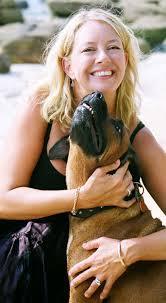
For those readers who have not yet discovered your wonderful new novel THE RIVER CHARM, what is it all about?
The River Charm is a very special book to me, because it is based on the true life adventures of our great-great-great grandmother, Charlotte Elizabeth Atkinson. Set in Australia, during the 1840s, it is the story of a family who lost everything but fought against almost insurmountable odds to regain their independence and their right to be together as a family. Charlotte was born into a wealthy family at Oldbury, a grand estate in the bush. But after her father dies, her mother is left to raise four young children on her own. A young widow was a tempting target – from murderous convicts, violent bushrangers and worst of all, a cruel new stepfather. Fearing for their lives, the family flees on horseback to a remote hut in the wilderness. The Atkinson family must fight to save everything they hold dear.
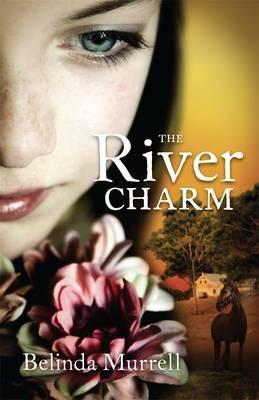
How did you get the first idea for it?
When I was a child, my grandparents, Nonnie and Papa used to take my sister (that's me!) and I down to the Southern Highlands to visit the ancestral home. It was a grand old mansion called Oldbury which had been built by my great-great-great-great grandparents James and Charlotte Atkinson in about 1828. On the way, my grandparents always told us stories about the family who had lived there. The stories were filled with adventure, tragedy and joy. I can remember peering through the gate at the old house which was then neglected and shabby but being in love with the romance of the stories.

When my grandmother Nonnie died, she left me a pile of her treasures. Amongst them were a painting of Oldbury, and a pile of old books. One had been written by James and one by Charlotte. This one was the first children’s book published in Australia.
Two years ago my mum, Gilly my sister, Kate (that's me again!) and our daughters Emily and Ella went to see an original sketchbook of drawings done by Charlotte Atkinson. It was when we were all sitting around that desk, with our white gloves on, looking through this priceless heirloom that I decided I wanted to write a story about that extraordinary family.
What was the most interesting thing you discovered during your research?
I discovered that there was a journal written in 1826 by Charlotte Waring (my great-great-great-great grandmother) which is now held in the National Library. I obtained a copy of it and it was so fascinating to read her words in her own handwriting about the beginning of her voyage to Australia. The journal covers just a short few weeks but during this time she left her family and homeland for ever, met her future husband, enjoyed their early romance and survived a terrifying storm which nearly destroyed their ship.
I also read a letter written by her daughter Charlotte which listed the fascinating items which James Atkinson brought out on that journey with him – including a fine stallion, several dogs, plus white lillies in glass topped boxes for his garden. Like my family, the Atkinson family loved animals and raised many orphan creatures including a pet koala, wallabies and baby possums.
What do you love most about writing?
Immersing myself in a different place and time. Discovering the stories of my characters. Experiencing the almost magical evolution from the first spark of an idea, to the outline of a story, to a complete book.
I also love the feedback from my readers. One of my greatest joys is getting hundreds of emails and letters from kids, telling me how much they love my books.
What are the best 5 books you've read recently?
Of course The Wild Girl by Kate Forsyth!! I love historical novels based on real people and real events, and this was particularly fascinating. (Thank you, Bin!)
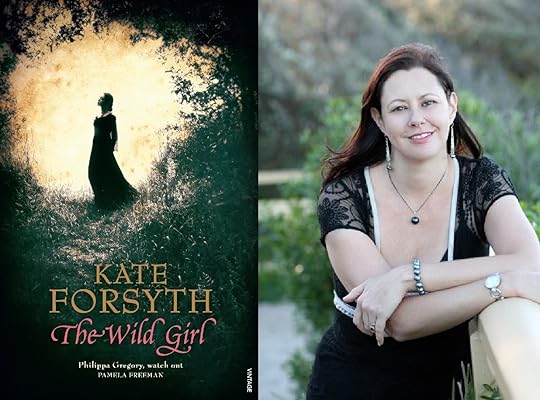
The Rosie Project by Graeme Simsion. This book made me laugh out loud. A fun, entertaining book.
Z – A Novel of Zelda Fitzgerald by Therese Anne Fowler (yes you gave it to me for my birthday!!). I loved the voice of Zelda and it gave a captivating insight into 1920s America, the Jazz Age and its literary stars including of course F. Scott Fitzgerald and Ernest Hemingway.
The Secret Keeper by Kate Morton. I love all of Kate’s books, particularly the way they weave together stories of different generations and different time periods, through many twists and turns, to reveal deeply buried family secrets.
I’m now reading Blood and Beauty by Sarah Dunant about the Borgia family during the Italian Renaissance.
What lies ahead of you in the next year?
I am currently writing the sixth book in my new Lulu Bell series, called Lulu Bell and the Sea Turtle, which will come out in January 2014. It has been so much fun to work together with illustrator Serena Geddes to create the Lulu Bell series. The series has just been launched this week, and it has been so exciting to experience the excited buzz of a new series. I have a giant Lulu Bell cardboard character keeping me company in my office! With five books out this year, I am doing about eight weeks of touring including Melbourne, Brisbane, Sydney and regional areas.
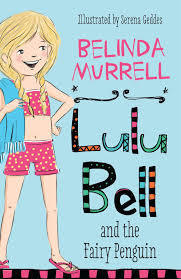
June 25, 2013
BOOK LIST: Belinda Murrell and her favourite Australian childrens books
I've asked her to name her own five favourite Australian children's books. This is what Belinda had to say:

There are so many fantastic Australian children’s books, so it is very hard to choose.
Seven Little Australians by Ethel Turner. One of my all time favourite books!
Snugglepot and Cuddlepie by May Gibbs. I loved this as a young child.
Are We There Yet? by Alison Lester. We travelled all around Australia for 18 months and took this book with us the whole way as an inspiration.
A Mother’s Offering to Her Children – the first children’s book published in Australia back in 1841, and written by our great-great-great-great grandmother Charlotte Waring Atkinson.

The Silver Brumby by Elyne Mitchell. This was definitely one of my favourites as a child.
Belinda Murrell is an internationally published, bestselling children’s author. Her 16 books include The Sun Sword Trilogy, a fantasy-adventure series for boys and girls aged 8 to 12. Her time-slip books - The Locket of Dreams, The Ruby Talisman, The Forgotten Pearl, and The Ivory Rose – have been shortlisted for various awards, including KOALAs (2013, 2012 and 2011), CBCA Notable List and highly commended in the PM’s Literary Awards. Her new book, The River Charm, is based on the thrilling adventures of her ancestors. For younger readers (aged 6 to 9) Belinda has a new Lulu Bell series, about friends, family, animals and adventures growing up in a vet hospital.
www.belindamurrell.com.au
You can read my unashamedly biased review of my sister's book here
[image error]
June 23, 2013
BOOK REVIEW: The River Charm by Belinda Murrell

Title: THE RIVER CHARM
Author: Belinda Murrell
Publisher: Random House Australia
Age Group & Genre: Children’s Historical/Contemporary Family Drama
The Blurb:
A river pebble on a charm bracelet has an astonishing true story to tell, of one family's bravery and survival in harsh colonial Australia . . .
When artistic Millie visits a long-lost aunt, she learns the true story of her family's tragic past. Could the mysterious ghost girl Millie has painted be her own ancestor?
In 1839, Charlotte Atkinson lives at Oldbury, a gracious estate in the Australian bush, with her Mamma and her sisters and brother. But after the death of Charlotte's father, things start to go terribly wrong. There are murderous convicts and marauding bushrangers. Worst of all, Charlotte's new stepfather is cruel and unpredictable.
Frightened for their lives, the family flees on horseback to a stockman's hut in the wilderness. Charlotte's mother and the children must fight to save their property, their independence and their very right to be a family. Will they ever return together to their beautiful home?
Based on the incredible true-life battles of Belinda Murrell's own ancestors, one of Australia's early artistic and literary families, the Atkinsons of Oldbury.
What I Thought:
I have a few disclosures to make.
1) Belinda Murrell is my sister
2) This book is about our ancestors, and tells the story of how my great-great-great-great-grandmother came to write the first children’s book published in Australia
3) It is an utterly beautiful and heart-breaking story that celebrates a lost part of Australian literary history that should never have been forgotten
4) I think it deserves to win every major literary prize for children’s fiction in Australia, if not the world
5) I am utterly and unashamedly biased
6) And, yes, I cried a few proud tears reading this book
I have often told the story of how my great-great-great-great-grandmother Charlotte Waring Atkinson came to write the first children’s book in Australia.

Every single time, people would come up to my afterwards and say ‘what an amazing story, why don’t you write it as a book?’
To my relief and joy, my sister Belinda did it for me (why some stories seize our imagination and demand to be written is part of the mystery of creativity – although I loved the tale, and told it many times, it never came knocking on my door and insisted I must give it life. I’m glad, because Belinda did it much better than I ever could have!)
THE RIVER CHARM is a powerful, dramatic and engaging story that celebrates love and friendship and family, and the sacrifices that sometimes need to be made in order to keep what’s important in life safe.
I recently launched Belinda’s book at Berkelouw Bookshop in Balgowlah, to a packed-out house and loads of excited fans, and I said, in utter sincerity, that I believed that the children there would one day be telling their children and grand-children, ‘I was there! I saw one of the greatest books in children’s literature being launched.’
And, maybe – just maybe – their signed first edition copy of THE RIVER CHARM will become an heirloom, to be passed down through the generations, just as Charlotte Waring Atkinson’s story was passed down in our family.
Charlotte Waring Atkinson's story, as told by me on the 170th anniversary of the publication of A MOTHER'S OFFERING TO HER CHILDREN BY A LADY LONG RESIDENT IN NEW SOUTH WALES
June 22, 2013
SEVEN FASCINATING THINGS I LEARNED WHILE WRITING BITTER GREENS
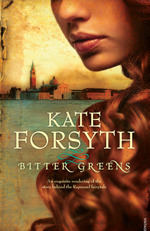
1. Charlotte-Rose de la Force, who first wrote the fairy tale we know of as Rapunzel, once dressed up as a dancing bear to rescue her much younger lover
2. She was second cousin to the Sun King, whose dogs slept on satin sheets in four-poster beds and ate off gold plates. His dwarves, however, slept on the floor in the corridor and were only tossed the occasional bone.
3. It was during the Sun King’s reign that champagne began to be drunk out of crystal glasses. This is because Louis XIV believed that glass was impervious to poison.
4. Vichyssoise was also invented during the Sun King’s reign. This is because it took so long for the king’s soup to reach his table. It had to be carried for miles through the corridors of Versailles, with everyone in the crowd curtsying and bowing as it passed, before being tasted by the taster to the taster to the taster to the King’s royal taster. I am not joking. Five different people tasted it before it reached the mouth of the king. No wonder it was always cold.
5. It was around this time that women started carrying little dogs in their handbags. This was so they could feed the soup to the dog first, and see if it died.
6. The Sun King and his court were not entirely paranoid. During his reign, a plot to poison the king was uncovered and led to the discovery of a criminal magical underworld in which fortune-tellers, witches and alchemists were doing a flourishing business selling “inheritance powders” made from arsenic and powdered toads. Two hundred people were implicated, including the king’s own mistress; 36 people were tortured and died at the stake.
7. The reason why it’s bad luck for actors to wear green is because Moliere, the Sun King’s favourite actor and playwright, was wearing a green coat when he died. He was in the middle of a scene in which a hypochondriac pretends to die. It took the audience a little while to work out he was not acting.
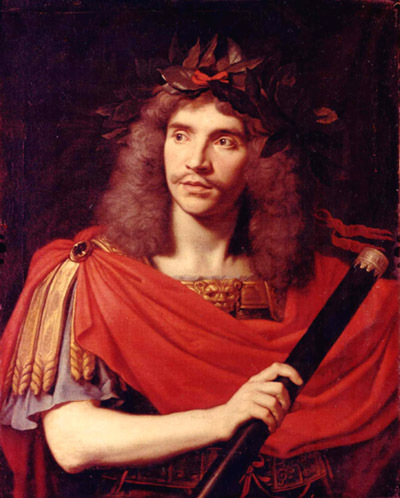
BITTER GREENS: The facts behind the fiction of the music
BITTER GREENS: The story behind my fascination with Rapunzel
June 20, 2013
INTERVIEW: Kate Lord Brown - author of The Perfume Garden
So when she published her book THE BEAUTY CHORUS about women flyers in the Second World war, I was quick to read it. You can read the interview I did with her in 2011 about THE BEAUTY CHORUS here.
I really enjoyed THE BEAUTY CHORUS and so I was quick to grab a copy of her new book THE PERFUME GARDEN as soon as it came out. It was wonderful! You can read my review here or just enjoy reading Kate's responses to my questions below:
[image error]
Are you a daydreamer too?
Absolutely - at least as a writer, boondoggling can be described as 'creative thinking'. Some of the most vivid parts of a story come to you when your mind's in neutral and playing - dreams, half wakefulness, when you're in the shower or walking the dog. Daydreaming is vital.
Have you always wanted to be a writer?
Yes, always. Like a lot of writers I wrote diaries and stories and plays as a child. It's been a lifelong dream.
Tell me about yourself – where were you born, where do you live, what do you like to do?
I grew up in a very wild and beautiful part of the south west of England, between Exmoor and Dartmoor. It's a beautiful part of the world, full of myth and magic - hidden valleys, stone circles, secret coves and beaches, austere moors, winters full of snow and summers that seem to last forever. We lived in an isolated village, and as children had the run of Stoodleigh Court's grounds. There was a lot of freedom and it was a great place to be a child - I'm sure it fostered my imagination. Where I live now couldn't be more different - in a gated secure compound in the only true desert country in the world, in the Middle East. It's not forever, but missing the countryside, and freedom, and culture is a constant ache. But you make the best of it - there are few distractions! Here, life revolves around writing and the family, but a dream day would involve one of the world's great cities - galleries, museums, browsing second hand bookstores, then back to the countryside or coast for a great meal with friends talking late into the night.
How did you get the first flash of inspiration for THE PERFUME GARDEN?
I saw Robert Capa's photograph of the 'Falling Soldier' in a Magnum exhibition, and at that moment all the strands of the story pulled together for me. I'd been reading about Spanish history since moving to Valencia, and I knew I wanted to write about the Civil War - but didn't know how. I had all these nebulous ideas floating around - this beautiful abandoned house I loved, the aftermath of 9/11, perfume ... and in that moment it was like someone turned the focus on the lens. Photography was the key.
[image error]
How extensively do you plan your novels?
The last four novels have been historical fiction, so there is a very strong scaffolding to the stories - it matters that the history is factually accurate, and that any fiction is within the realms of possibility. Beyond that, I know the key 'beats' of the story, so I have a sense of the rhythm, but I don't overplan. Being surprised by your characters is too much fun to plot rigidly.
Do you ever use dreams as a source of inspiration?
Oh yes, all the time. I specialised in Surrealism for my BA and have been interested in active dreaming for years. I'm a big believer in rolling through the scenes of your story as you fall asleep - very often in the morning any 'snags' in the storyline will have unravelled. And it's a great moment when your novel spills into your subconscious and you are dreaming about the characters. (I so agree!)
Did you make any astonishing serendipitous discoveries while writing this book?
I love serendipity - it always feels like a small sign that you're on the right track. There were a lot of discoveries with this book, from coming across the perfect abandoned house for Emma, to introductions to historians who helped with the research. Then there was a simple email exchange with a tourism officer in Valencia. A throw away remark he made gave me the missing, final plot twist - what happens to Delilah at the end of the story really happens on a regular basis. Sometimes as a writer it feels like you're following a trail of breadcrumbs more than making anything up!
Where do you write, and when?
It depends what stage the story is at. Now, an average day writing is up at 5am, quickly scrawl down any notes for the day. Take the kids to school, then 7.30am - 12pm writing at my desk, usually with Milo the Siamese X sitting on the table and Oscar the pug by my feet. The desk is in the corner of the living room, so later in the day there are normally troops of children running in and out. If it's a first draft, you have to pin down the story as it comes to you, so the early files are filled with till receipts and backs of envelopes with cryptic messages scrawled in eyeliner, jotted down when I'd stopped in traffic. When the children were small in England, I had a system where I'd toss these scraps down to the basement room where I worked because there was a very real possibility a child or dog would eat the valuable clue. It worked a bit like an Oracle - in the evening when everyone was asleep, I'd run down into the darkness and flick the light on to find the notes scattered like confetti. Each one was a 'seed' from which dialogue or a scene grew.
[image error]
What is your favourite part of writing?
The first draft, definitely. I love the energy of a new idea blossoming, when you're falling love with the story and the characters. When it gathers momentum, that feeling of urgency can't be beaten.
What do you do when you get blocked?
I let that scene rest, get a change of scenery - walking is very good for 'unblocking'. If you skip ahead and write a scene you're dying to write, then go back to just before the block, it's often clear which pages need to be scrapped. I think we all write ourselves into dead-ends sometimes, and that's when it's time to get ruthless and cut back the dead wood to where the story is still fresh and alive, then 'graft' it to the scene you're excited about.
How do you keep your well of inspiration full?
It's not as easy as it was, living in Spain or the UK. The things that inspire - beautiful countryside, the coast, ancient architecture, creativity, freedom, authenticity, aren't to hand. So I travel a lot, stockpile books, magazines, movies like a squirrel for the lean months. I keep up to date on what's going on culturally in the places I love. I read, a lot.
Do you have any rituals that help you to write?
Music plays a big part - each novel has a soundtrack which is a shortcut back to the story each time I listen to it. Each first draft is handwritten, so buying new stationery at the start of a new story in September recreates that 'back to school' type focus.
Who are ten of your favourite writers?
James Salter, Anne Tyler, Carol Shields, Barbara Trapido, William Boyd, Mary Wesley, Edward St Aubyn, Sarah Hall, Angela Carter, Isabel Allende. These are all writers I read again and again.
[image error]
Isabel Allende is one of my favourite writers too!
What do you consider to be good writing?
Invisible writing - you are simply swept away in the moment, the feeling, the story, dialogue that feels effortless and true.
What is your advice for someone dreaming of being a writer too?
Begin today. You don't need fancy courses, or computers, or acres of time. Dust off an old notebook and a pen that feels good when you write with it, and carve out a few minutes a day. Write a little every day about something that matters to you, and read books that excite you and move you every day.
What are you working on now?
I'm juggling a few books at different stages - THE PERFUME GARDEN for the US, two new novels are being edited, and I'm finishing up the research for the story I'll start in September. Editing is necessary - 'writing is rewriting', but the siren call of the new story is strong ...
June 18, 2013
BOOK LIST: Kate Lord Brown - Favourite books set in Spain
Spain is one of my favourite countries in the world. I actually spent my honeymoon there, and so I think of it as a gorgeous, romantic and sensual country. I drew upon the historical setting of the Spanish Civil War for my own novel FULL FATHOM FIVE and have been interested in both the place and the time ever since. (and yes, yes, I know! It was published under my maiden name, Kate Humphrey)

Kate Lord Brown, the author of the wonderful books THE PERFUME GARDEN and THE BEAUTY CHORUS has kindly compiled a list of her favourite books set in Spain.
[image error]
She says:
"We arrived in Spain in the winter of 2001 at the end of several months travelling around the world, with just a battered silver trunk in the back of our small convertible.
I had never visited the country that was to be our home for the next few years, and had no idea what to expect. In my imagination, it was a combination of austere, beautiful hilltop castles, dazzling bougainvillea, whitewashed mountain villages – and the blowsy high rise resorts on the coast so beloved by European tourists. In imagination it was sunny, hot. The drive through the drizzly Pyrenees, across the sweeping plains to Madrid and ochre hills to Valencia surprised me.
There have been some good ‘Year In Provence’ style books published since – notably Chris Stewart’s ‘Driving Over Lemons’, which is a good start if you are planning to visit or live in Spain.
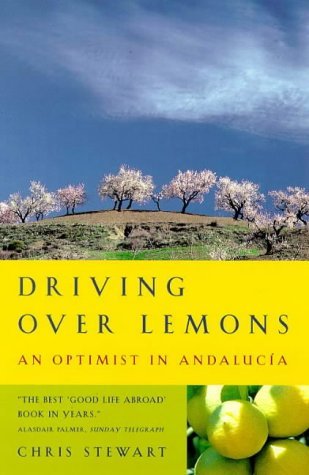
When we moved there, I was relying on my copy of the Rough Guide to Spain, Spanish for Dummies, and a general admiration for Spanish literature. There’s nothing like youthful gung-ho enthusiasm.
I had always loved the work of Spanish writers – the influence of authors like Isabel Allende and Gabriel García Márquez was responsible for the not entirely successful magic realism of my early stories. If you like Allende’s novels, I recommend her cook book/memoir ‘Aphrodite’ which I packed in the trunk when we moved to Spain, and cooked my way through over the months.
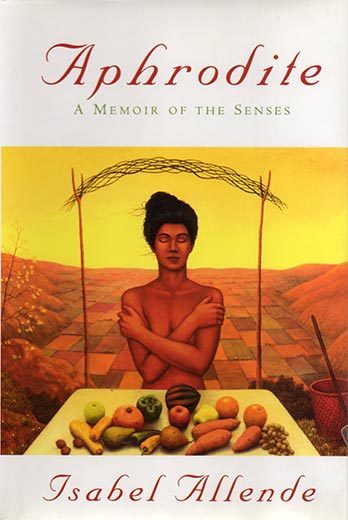
I love Spanish language poets too, Lorca and Neruda particularly. I began to immerse myself in Spanish culture and history as we travelled – everything from the basics of the Spanish Civil War, to Hemingway’s evocative, macho ‘Death In the Afternoon’.
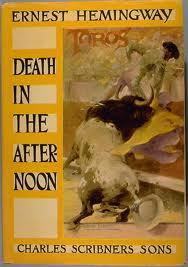
In Spain, I read Washington Irving’s ‘Tales of the Alhambra’ during a memorable trip south to Granada (So did I, Kate LB!). If you ever get the chance to visit the Alhambra – go. It’s a magical, fairytale place, just as beautiful in reality as in imagination. As the idea of writing a novel about Spain came together thirteen years ago, I started reading more deeply – the photo illustrating today’s post is just one shelf at home.
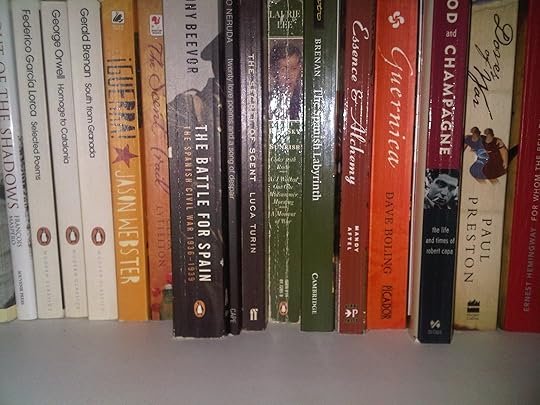
There are boxes of Spanish history books and novels, stored with the early notes for ‘The Perfume Garden’ in England. These are just a few of the very best books I came across:
‘Homage to Catalonia’ by George Orwell, and ‘As I Walked Out One Midsummer Morning’ by Laurie Lee are two classics that transport you back in time and into the shoes of two writers who fought during the Spanish Civil War.
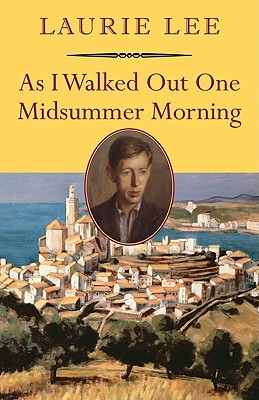
‘Battle for Spain’ by Beevor and ‘Doves of War’ by Preston were the two most useful histories of the Civil War.
‘South from Granada’ by Brennan (in fact anything by Brennan on Spain), is a wonderful account by one of the Bloomsbury set of his time in Spain. Worth reading for the account of Virginia Woolf on a mule alone.
[image error]
June 16, 2013
BOOK REVIEW: The Perfume Garden by Kate Lord Brown
Title: The Perfume Garden
Author: Kate Lord Brown
Publisher: Atlantic
Age Group & Genre: Contemporary/Historical Novel for Adults
The Blurb:
The Perfume Garden combines the gripping storytelling of Kate Morton with the evocative settings of Victoria Hislop to tell this sumptuous story of lost love and family secrets set between modern day Valencia and the Spanish Civil War.
High in the hills of Valencia, a forgotten house guards its secrets. Untouched since Franco's forces tore through Spain in 1936, the whitewashed walls have crumbled, the garden, laden with orange blossom, grown wild. Emma Temple is the first to unlock its doors in seventy years. Guided by a series of letters and a key bequeathed in her mother's will, she has left her job as London's leading perfumier to restore this dilapidated villa to its former glory. It is the perfect retreat: a wilderness redolent with strange and exotic scents, heavy with the colours and sounds of a foreign time.
But for her grandmother, Freya, a British nurse who stayed here during Spain's devastating civil war, Emma's new home evokes terrible memories. As the house begins to give up its secrets, Emma is drawn deeper into Freya's story: one of crushed idealism, lost love, and families ripped apart by war. She soon realises it is one thing letting go of the past, but another when it won't let go of you.
What I Thought:
A young woman inherits an old house in Spain, discovers clues to buried family secrets, meets a gorgeous Spaniard, and finds her true path in life ... interposed with flashbacks to her grandmother's work during the bloody and turbulent Spanish Civil War as a nurse ... this book is exactly the sort of book I love to read the most. And I did love it!
THE PERFUME GARDEN switches between two timelines. The first is set in contemporary times – soon after 9/11 – and deals with Emma’s grief and attempt to rebuild her life after the loss of her lover. The second is set during the Spanish Civil War and tells the story of Emma’s grandmother Freya, her brother Charles and a beautiful Spaniard Rosa.
Both storylines are strong, the setting is wonderfully romantic and evocative, and Emma’s job as a perfumier adds an extra frisson of sensuous interest.
The Spanish Civil War was a bloody disaster, in all sense of the word, and these sections were sometimes heart-wrenching. I have always been fascinated by this period of history, and THE PERFUME GARDEN does any extraordinary job of bringing it to life.
As for the house in Valencia and its old perfumed garden … well, all I can say is: I WANT!
Afternote: (I should add here that my novel FULL FATHOM FIVE (written in my 20s and published under my maiden name Kate Humphrey) also drew upon the history of the Spanish Civil War, and so its a period I have researched thoroughly.)

June 15, 2013
INTERVIEW: Kate Lord Brown - author of THE BEAUTY CHORUS
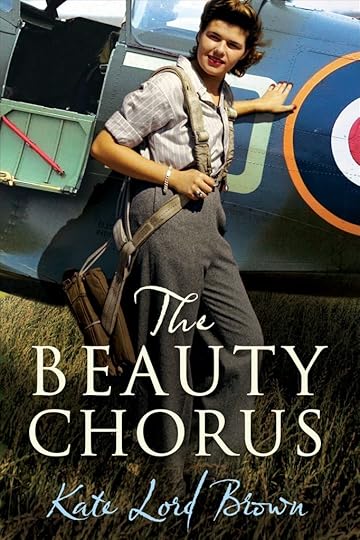
Kate, tell me about your new book, ‘The Beauty Chorus:
A: It tells the little known story of the incredible Spitfire Girls - women pilots who flew everything from fighter planes to huge bombers during WW2. The tale is told from the point of view of three fictional girls - Evie, Stella and Megan, but it interweaves fact and fiction. The figher pilots nicknamed these glamorous volunteers 'the beauty chorus' - but they were incredibly brave and skilful pilots too!
What was the first flash of inspiration for this book?
A: I was flicking through one of my husband's magazines when I was doing the recycling (as you do!) and came across a small obituary for one of the women. I thought immediately - why don't people know more about these amazing people? I want to know more! From that tiny article, months and months of fascinating research followed.
How long did it take to build it into a complete story?
A: I started researching and writing back in 2008, so it has been a long - but enjoyable - process
What were some of the greatest challenges you had to overcome in writing it?
A: I'm not a pilot! I had to learn enough about WW2 aircraft, flying, the real events and stories of these characters lives to make the story 'ring true'.
I’m a huge fan of your blog, ‘What Kate Did Next’ – could you tell me a little bit about how it began and what you try and achieve with it?
A: Thank you! It began with the hunch that there must be other writers and readers out there like me - tied to the house with small children, living in the middle of nowhere, and unable to get out to writer's groups. What I try to achieve is exactly that - a global writer's group. We have people following, and writing with us now from all over the world, and we even did a spin off 'Burning Lines' where we wrote a whole short novel online together during one month - it was a bit like playing consequences!
June 13, 2013
INTERVIEW: Sophie Masson author of Scarlet in the Snow
Sophie has been kind enough to join us today to answer a few questions about her new book:
[image error]
Tell me about your new book:
Scarlet in the Snow is what I call a 'fairytale thriller', which combines the mystery and magic of fairytale with the pace of a good thriller. And did I say it's also very romantic? Inspired by the Russian version of Beauty and the Beast, the Scarlet Flower, as well as having elements from two other Russian fairytales, Fenist the Falcon and Vassilissa the Fair, it's set in the same world as last year's Moonlight and Ashes, but in a different country. It's told in the lively first person voice of Natasha Kupeda, youngest of three girls, whose widowed artist mother struggles to keep the family going with portrait commissions after her husband dies, leaving many debts. One day, when Natasha is delivering her mother's latest painting to a client out in the wilds, she is caught in a blizzard and, pursued by wolves, has to find shelter in a mysterious mansion that looms out of the gloom--and so begins an extraordinary, frightening and wonderful adventure that will change her whole life.
[image error]
What do you love most in the world?
My family.
What do you fear most in the world?
That anything bad should happen to any of them.
What are your 5 favourite childhood books?
Michel Strogoff by Jules Verne
King Ottakar's Sceptre (a Tintin adventure) by Herge
The Stone Cage by Nicholas Stuart Gray (this is one of my favourites too!)
Finn Family Moomintroll by Tove Jannsson
Black Jack by Leon Garfield
Agh! So many more I couldn't squeeze in!
[image error]
What are your 5 favourite books read as an adult?
Le Testament Francais (Andrei Makine);
Kristin Lavransdatter(Sigrid Undset)
Jonathan Strange and Mr Norrell(Susanna Clarke)
The Ghost Writer(John Harwood)
The Night Watch series by Sergei Lukyanenko--And lots more, that's just a small selection!
[image error]
What books might we be surprised to find on your shelves?
Card Games and Tricks; The Book of Vintage Cars; Men at Arms series: The Scythians; the Journal of the Royal Society of NSW, 1900!
How would you describe perfect happiness?
A lovely family day with us all together in a beautiful spot--my new book out and lots of people enjoying it-the sun shining but not too hot--in the early-mid 20's--and a great cake to celebrate it all!
June 11, 2013
FAIRY TALES & FANTASY: Sophie Masson talks about fairy tales as inspiration
[image error]
Today Sophie talks about how fairy tales help inspire her fiction:
Fairytales have always been a rich source of inspiration for me, and those of my fantasy novels for young people that are based on fairytale elements seem to have struck the strongest chord with readers.
What to me makes traditional fairytales particularly suitable as a basis for modern fantasy is that in themselves they mix both enchantment and pragmatism, the world of the everyday and a realm of pure magic. And it's all done in such a matter of fact yet also profound way. You can never get to the end of the meanings of fairytale; and the fairytales of a people reveal their essence, their soul, if you like, in a moving yet also funny and beautiful way.
And it's not just the folk-based fairytales such as the Arabian Nights, Grimm's collections and Perrault's that are so inspirational. Original fairytales can also work this way: think of Hans Christian Andersen and Madame Leprince de Beaumont, who wrote Beauty and the Beast, a story which has inspired countless writers, including me with Scarlet in the Snow!
[image error]
I loved fairytales as a child.
They were both consolation and escape; helped me to disappear into enchanted realms when family melodramas made life difficult and painful; but also helped me to make sense of the world on my return.
I love fairytales now, both as a writer, and as a reader. There's something about good fairytale-based novels—a lightness of touch, a freshness of spirit—that I think comes directly out of that sparkling spring, that bubbling source of fairytale.
Fairytale is less grand than myth, and less 'serious' than legend, but it is more romantic than both. More human. And yet more magical. More geared towards not the great ones of this world, but the little people. Going from light to dark and all shades in between, managing all emotions from love to hatred, joy to sorrow, dread to excitement, fairytale is humble yet powerful, full of meaning yet full of adventure.
And in my opinion it is evergreen and inexhaustible in its potential to enrich the work of writers at all times in the history of literature. If you actually looked at the writers through the ages who have been influenced by fairytale, you might be surprised!
They range from giants of literature like Shakespeare, Dostoevsky and Dickens to popular geniuses like JRR Tolkien and Agatha Christie, from the Arthurian writers of the Middle Ages to the classical children's writers such as Nicholas Stuart Gray and CS Lewis, on to modern magicians such as Neil Gaiman, JK Rowling, Kate Forsyth, Juliet Marillier, Robin McKinley, Margo Lanagan, and many more.
[image error]
Mind you, it is very important when using fairytale as a basis for your own work to understand what those writers understood: go to the core of the story you're using as a base. Don't do violence to the story's spirit; but don't be afraid of taking risks, either. The originality of what you do won't lie in turning the story upside down—anyone can do that—but in refreshing it, in making your readers see it and understand it with new eyes, in uncovering yet another magical flash of colour in the opal beauty of fairytale.



